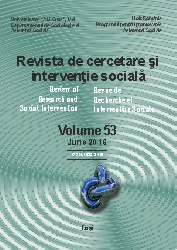DEVELOPING A SCALE TO MEASURE PROSPECTIVE TEACHERS’ SELF-EFFICACY BELIEF IN VALUE EDUCATION
DEVELOPING A SCALE TO MEASURE PROSPECTIVE TEACHERS’ SELF-EFFICACY BELIEF
IN VALUE EDUCATION
Author(s): Filiz Aslan ÇetinSubject(s): Education, Higher Education , Educational Psychology, Sociology of Education
Published by: Expert Projects Publishing
Keywords: values; value education; self-efficacy belief; prospective teacher education;
Summary/Abstract: This study aims to develop a reliable measurement tool to measure prospective teachers’ beliefs in their self-efficacy in value education. The research group of the study consisted of 351 final year students attending the Faculty of Education, Gazi University in 2015-2016 academic year. Opinions of experts were taken in order to ensure scale’s content and face validity and Exploratory Factor Analysis (EFA) was applied to the data set based on students’ opinions in order to ensure construct validity. It was observed as a result of the Factor Analysis that the construct consisting of 26 items and four factors explained 60.44% of the total variance. The resulting factors after the factor analysis were Self-Efficacy Belief in Planing Value Education (SEBPVE), Self-Efficacy Belief in Implementation (SEBI), Self-Efficacy Belief in Cooperation (SEBC) and Self-Efficacy Belief in Assessment (SEBA). The reliability of the whole scale and sub-scales was tested with internal consistency and test-retest methods and it was observed that the reliability coefficients were within acceptable limits. Findings resulting from the item analysis showed that all items of the scale were discriminative. Based on these findings, the scale can be said to be a reliable measurement tool that can be used to measure prospective teachers’ beliefs in their self-efficacy in value education.
Journal: Revista de Cercetare şi Intervenţie Socială
- Issue Year: 2016
- Issue No: 53
- Page Range: 39-54
- Page Count: 17
- Language: English

